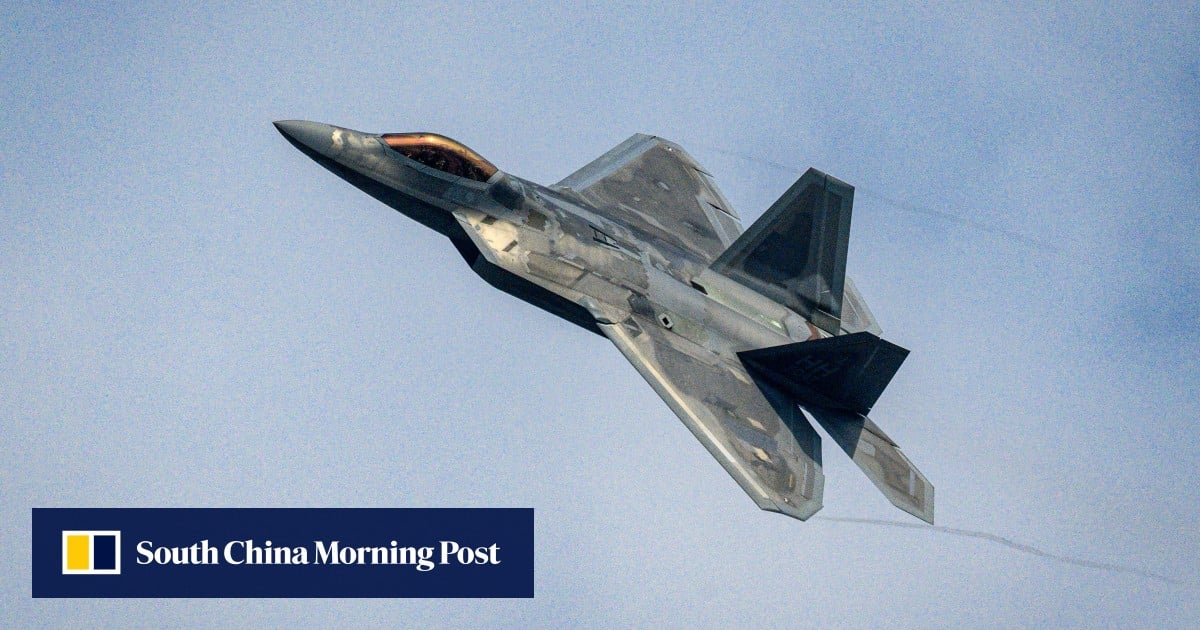


Their detection method covered a vast battlefield of around 63,000 sq km (24,300 square miles), ensuring that regardless of the F-22’s manoeuvres it would remain firmly within the sight of China’s radar network, said Xie and his colleagues in a peer-reviewed paper published in the Journal of Beijing University of Aeronautics and Astronautics on February 26.
These results suggest the potential impact of their research on the F-22’s combat effectiveness could be considerable, given that its air-to-air missiles had a range of about 100km (62 miles) and, for smart bomb attacks on ground targets, it must be within a 20km radius. The F-22 must evade detection or locking by enemy defence systems before it could reach its effective strike range.
Xie’s team said this new detection technology enabled China’s radar system to pinpoint the F-22’s real-time position with remarkable accuracy, achieving a minimal error of nearly 20 metres (65 feet). This information could then be swiftly relayed to interceptor fighters or air-defence missiles.
Calculations for precise target coordinates and movement speeds could be completed in just 0.008 seconds. Even in the event of an F-22 formation invasion, detailed information about each aircraft could be obtained in 0.02 seconds, according to the researchers.
Chinese defence contractors have already introduced a number of anti-stealth radars, using various techniques such as emitting low-frequency electromagnetic waves or increasing transmission power to detect stealth targets. These radars are typically designed to operate independently.
But the radar signatures of enemy aircraft may be different to previously collected intelligence data in real-world combat scenarios. Changes in an aircraft’s attitude or direction during flight can lead to significant signal fluctuations, potentially causing trackers to lose their target.
To address this challenge, Xie’s team employs multiple radars to scan for stealth fighters from different angles. Although this concept is not entirely new, there have been significant hurdles to implementing it.
Detecting stealth targets often requires mobilising substantial resources within a radar network. However, in real-world combat situations, the number of aerial targets can be huge, and a single radar can only allocate a portion of its resources to detecting and tracking the F-22.
Xi issues hi-tech military call in push for integrated armed forces
Xie’s team said it had overcome this long-standing engineering challenge. The researchers said their “smart resource scheduling” method allowed a centralised networking radar system to adjust beam parameters and the power of each radar based on the characteristics and real-time positional changes of stealth aircraft in the theatre.
This allowed the system to focus its limited detection resources on the most exposed azimuth, or angle of arrival, of the stealth fighter, significantly enhancing the intensity and tracking accuracy of its radar signature while ensuring it is continuously locked on to the target.
Each radar therefore needs to spend only a fraction of its frequency and power on tracking stealth fighters, saving valuable resources for handling other targets.
Comprehensive and stable tracking of an F-22 fighter formation can be achieved with merely three radars, according to the paper.
These radars can be strategically positioned on land, islands, ships and even aerial platforms, bolstering China’s denial and anti-access capabilities in the South China Sea and Western Pacific regions.
The history of the F-22 dates back to the Cold War era but by the time the first F-22 fighter was tested in 1997, the Soviet Union had disbanded.
Owing to exorbitant costs and the absence of competition, the US government shut down the F-22 production line about a decade ago.
Nonetheless, in recent years, China has significantly ramped up its production of J-20 heavy stealth fighters. In response, the US military has moved to improve the stealth and combat capabilities of its existing fleet of more than 100 F-22 fighters.
Chinese scientists and engineers have recently advanced their anti-stealth fighter technology, including deploying the world’s largest near-Earth orbit optical observation satellite constellation for real-time tracking of F-22s, and developing a hypersonic air-defence missile capable of reaching over 2,000km.
The high-speed aerodynamic institute of the China Aerodynamics Research and Development Centre in Mianyang, a leading research agency involved in China’s hypersonic weapon programme, contributed to Xie’s study.